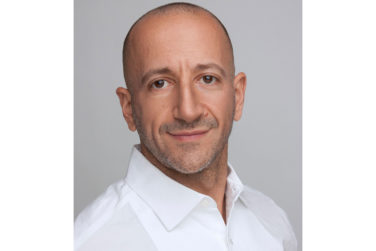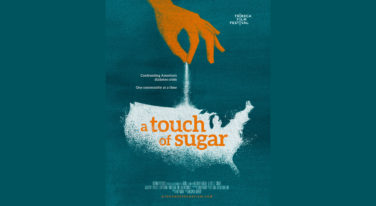What’s the difference between a Brand Champion and your standard brand manager, director, or marketer? Brand Champions take that one extra step that others didn’t see, or adds the precise insight needed to help even one patient better manage their health, or possesses the vision to see the big picture that opens doors for all—marketers, physicians, patients, and everyone they connect with in our industry.
Take Kayte Lock, for example. She held a patient summit and learned that rheumatoid arthritis patients had intimacy issues in their relationships. Patients were talking about it, but no one else did. Until Kayte got involved. Or Andrea Cook-Julian, who broke into the long-term care space by forging new partnership with organizations like the American Medical Directors Association, which lead to new success for the company’s brands. Or Julie Holcombe, who reached a younger generation with chronic idiopathic constipation by letting them express their issues through newly designed poop emojis.
This year we honored 18 high-caliber individuals in 17 categories—with a pair of marketers winning together in Dermatology—for whom, it appears obvious, are answering to a higher calling at a critical time in the industry’s history. These individuals embrace the challenges of marketing in a rapid change environment, and their results more than back that up.
Kayte Lock, Director, Portfolio Marketing & Customer Engagement, Pfizer
 Intimacy is an important part of a relationship. However, people living with chronic conditions like rheumatoid arthritis (RA) are constantly juggling many aspects of their lives in relation to their health. In particular, they may face intimacy and relationship hurdles due to fatigue, joint pain, or poor self-image, to name a few. Kayte Lock tapped into these insights by bringing together 10 top online patient advocates and influencers in the RA community to discuss how Pfizer can better support them.
Intimacy is an important part of a relationship. However, people living with chronic conditions like rheumatoid arthritis (RA) are constantly juggling many aspects of their lives in relation to their health. In particular, they may face intimacy and relationship hurdles due to fatigue, joint pain, or poor self-image, to name a few. Kayte Lock tapped into these insights by bringing together 10 top online patient advocates and influencers in the RA community to discuss how Pfizer can better support them.
RA most commonly begins in women as early as 30, which often is a time for getting married or planning to have kids. So, the topic of intimacy and family planning when living with RA is a very pertinent issue, but the community indicated they had trouble finding information about it. So, the question for Kayte became: How and where to disseminate this information?
Kayte, who was a consumer lead on XELJANZ at the time, suggested the brand leverage an asset the company already owned: www.Arthritis.com. Kayte lead the creative overhaul of the site, which included assembling a panel of RA patients, advocates, and Rheumatologists to serve as advisors for all site content. Additionally, she recruited sexologist, Logan Levkoff, PhD, to provide tips on intimacy and relationships. Since the site’s relaunch, article topics on intimacy, dating, and self-love have already proved to be quite popular.
But all of this started with a patient summit that was very popular in its own right. Ninety percent of participants posted about the summit on their social channels—and 100% of posts were positive. Pfizer was also a big fan of Kayte’s efforts. The company has made her summit the gold standard to follow and recently completed another successful summit.
Robert Burke, Product Director, XARELTO, Janssen Pharmaceuticals
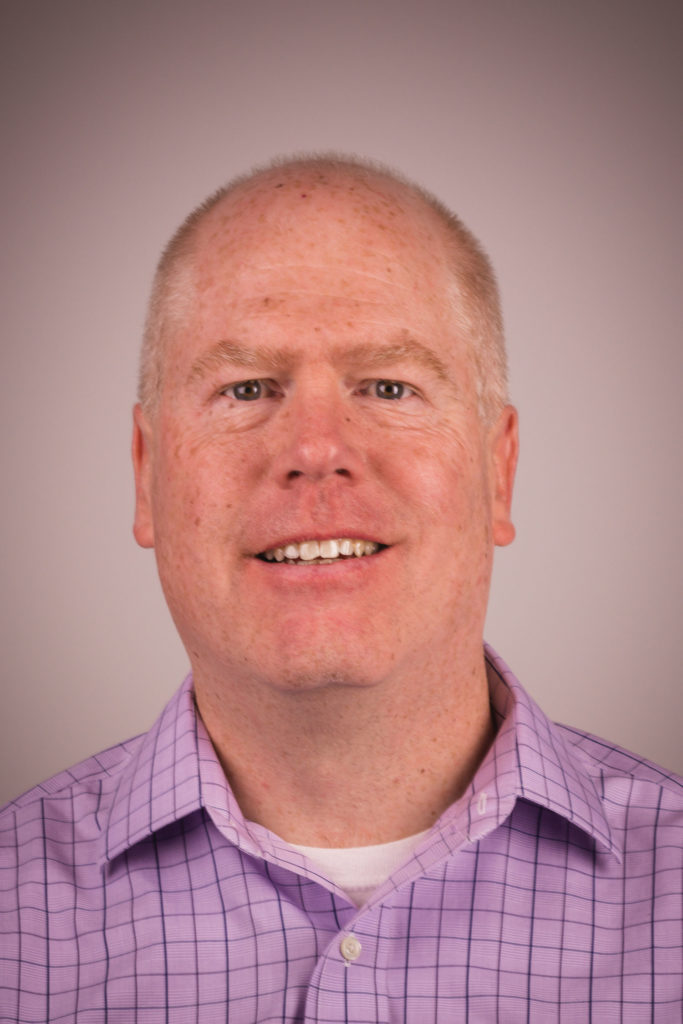 Consumers today don’t just want the personal touch—they expect it. This remains true in healthcare. In fact, it may be even more important, especially when you are trying to reach physicians who are already overwhelmed with medical information. To really get their attention, you need to deliver something that truly resonates with them. This is something Robert Burke knows well, and is also highly effective at delivering.
Consumers today don’t just want the personal touch—they expect it. This remains true in healthcare. In fact, it may be even more important, especially when you are trying to reach physicians who are already overwhelmed with medical information. To really get their attention, you need to deliver something that truly resonates with them. This is something Robert Burke knows well, and is also highly effective at delivering.
Robert is a strong advocate in support of a deep audience analysis that allows a company and its agency partners to ensure all efforts are engaging and impactful. To achieve this, he led the development of a segmented audience approach for XARELTO. One way he accomplished this: Leveraging CMI’s ByDoctor CheckUp, which allowed his marketing team to validate and deep dive into four different segments of the overall XARELTO target list of HCPs via a comprehensive customized survey. Each of the segments that were assessed revealed actionable insights that could be used to define a promotional strategy.
Robert then spearheaded the development of separate media plans and creative for each segment, so that they were aligned to the needs and preferences of each group. He also took part in various media mix modeling exercises to ensure that investment towards each segment/channel would return the highest projected ROI.
Since implementing the segmented approach, XARELTO has seen a significant increase in overall ROI as it relates to non-personal promotion—exceeding that of the last readout in 2016. Additionally, click through rates also increased significantly with more than 250% growth from the beginning of 2016 (when segmentation was implemented) to the end of the year.
Samantha Hack, Director, Patient Advocacy, Neurology, Sunovion Pharmaceuticals, Inc.
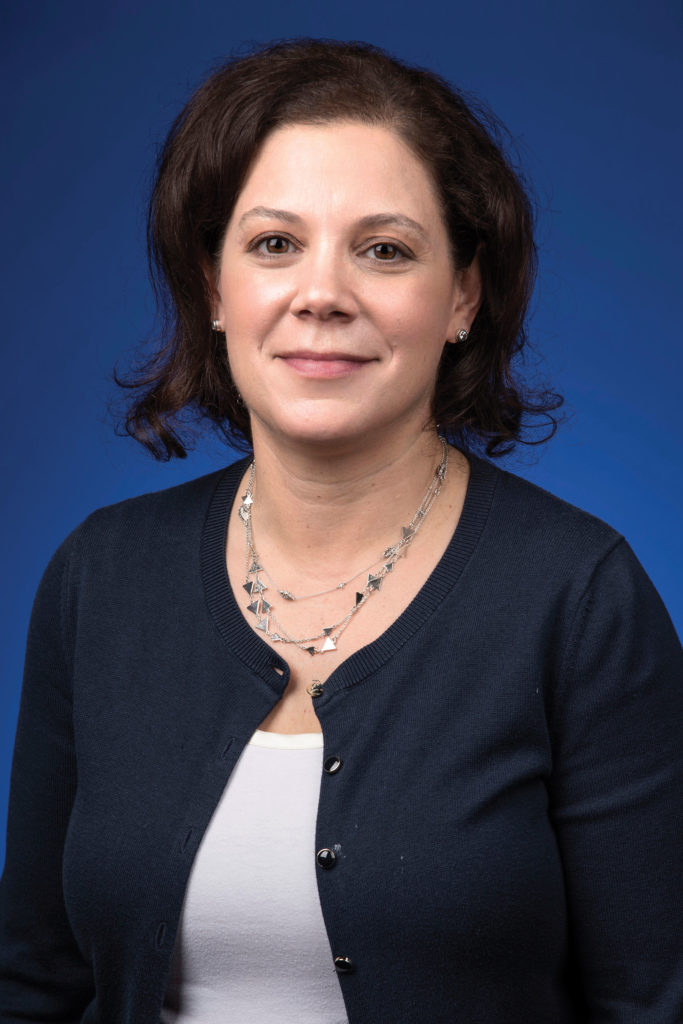 Samantha Hack leads patient advocacy in the neurology therapeutic area at Sunovion to create awareness and change conversation for the epilepsy and Parkinson’s disease communities.
Samantha Hack leads patient advocacy in the neurology therapeutic area at Sunovion to create awareness and change conversation for the epilepsy and Parkinson’s disease communities.
Sam ensures the patient is at the center of everything, a core initiative for Sunovion. Through her efforts, Sunovion has built trust within the epilepsy community by engaging patients and caregivers to develop better understanding of their needs. Sam has led the way in getting colleagues involved in patient communities by participating in advocacy walks and events to support educational programs and research. One event created with Sunovion’s support is a Netathon to benefit the Epilepsy Foundation, hosted by actor and epilepsy activist Greg Grunberg, whose son has epilepsy. Through a partnership, Grunberg, the Epilepsy Foundation, and Sunovion have brought attention to the dialogue that needs to occur about epilepsy. Sunovion is also the sponsor of TalkAboutIt.org, a website and program providing a platform for the epilepsy community to share its voice and fight stigma.
Sam ensures the patient voice is heard by Sunovion’s employees. She was instrumental in bringing Grunberg into company meetings. At Sunovion’s national sales meeting, Grunberg interviewed Jake, a military veteran living with epilepsy, and wife Karissa, about their journey dealing with Jake’s severe seizures after he contracted encephalitis. At Sunovion’s annual meeting, Grunberg facilitated a discussion with patients living with serious medical conditions to share their experiences and perspectives.
Sam continues to amplify voices of people living with epilepsy through the #MyEpilepsyHero campaign, which asks patients and caregivers to recognize people who encourage and uplift them. Members of the epilepsy community nominate their heroes on Facebook and Twitter, driving contributions to the Epilepsy Foundation.
Sam is forging partnerships with leaders in national Parkinson’s advocacy organizations, bringing her expertise to bear developing initiatives to ensure voices of those living with Parkinson’s disease are heard.
Rhonda Peebles, Executive Director, Head of Marketing, Dermatology, Novartis Pharmaceuticals Corporation
 Tiffany Crawford, Director, Professional Marketing, Dermatology, Novartis Pharmaceuticals Corporation
Tiffany Crawford, Director, Professional Marketing, Dermatology, Novartis Pharmaceuticals Corporation
 COSENTYX was the first approved product in its class, but at the midway point of 2016, two new challengers in the plaque psoriasis market were on the verge of FDA approval. Rhonda Peebles and Tiffany Crawford were responsible for determining the best course of action. Ultimately, they decided if you want to beat your competitor, you must think like your competitor and determine how to best differentiate yourself in a cluttered market.
COSENTYX was the first approved product in its class, but at the midway point of 2016, two new challengers in the plaque psoriasis market were on the verge of FDA approval. Rhonda Peebles and Tiffany Crawford were responsible for determining the best course of action. Ultimately, they decided if you want to beat your competitor, you must think like your competitor and determine how to best differentiate yourself in a cluttered market.
They established a first for Novartis: A cross-functional workshop called, “Exceed to Win,” which pitted two teams against each other in a wargame scenario. From the workshop, they keyed in on an important brand differentiator. Psoriasis is typically just talked about from one dimension—the skin and its corresponding Psoriasis Area and Severity Index (PASI) scores. In an evolving marketplace with an increase in competitive entry, Rhonda and Tiffany created a messaging narrative that shifted the moderate to severe Psoriasis conversation from purely numbers to clinically meaningful benefits that matter by honing in on four key brand attributes.
COSENTYX is the only product in its class with: 1. Long-term efficacy; 2. Consistent safety profile; 3. Strong PsA; and 4. Differentiating retreatment results. The team packaged these four attributes into one holistic story, “The Power of 4 – The Long-Term Management of Psoriasis Messaging Platform,” which defined a new benchmark in successful treatment of moderate to severe Psoriasis from both a patient and HCP perspective. This allowed them to position the brand as an optimal long-term solution for a long-term chronic disease.
This approach has been “touted” as some of the best messaging executed within Novartis and received many accolades from the Dermatology Customer and Sales Organization. Additionally, their efforts have helped COSENTYX to become the most-prescribed biologic of its kind within its class.
David Lewis, Vice President of Marketing, Valeritas, Inc.
 Dave Lewis was given an exciting task: Leading evolution of the marketing strategy for Valeritas’ new unique insulin delivery device, V-Go. For the millions of patients with diabetes needing insulin at meal times, V-Go provides a solution that does not require having to take multiple shots throughout the day. V-Go is worn under clothing allowing patients to discreetly and conveniently take their mealtime insulin, when they need it, without anyone knowing. And, importantly, V-Go provides significant additional A1c control versus multiple daily injections.
Dave Lewis was given an exciting task: Leading evolution of the marketing strategy for Valeritas’ new unique insulin delivery device, V-Go. For the millions of patients with diabetes needing insulin at meal times, V-Go provides a solution that does not require having to take multiple shots throughout the day. V-Go is worn under clothing allowing patients to discreetly and conveniently take their mealtime insulin, when they need it, without anyone knowing. And, importantly, V-Go provides significant additional A1c control versus multiple daily injections.
While V-Go offers great value to patients, Dave was still faced with the challenge of growing a new delivery method, from a small company, in a category that’s dominated by large players. Not only are HCPs comfortable with their current prescribing practices, treatment algorithms are well established, and patients have come to accept having to inject insulin up to four times a day—often not knowing another option exists.
So, Dave and his team focused their efforts on a targeted direct-to-patient program with a unique offering in the device space—an actual demonstration unit. Patients could request this innovative demo-kit online or receive it from their HCP. The campaign was complemented by sales rep activities, peer-to-peer education, and multichannel marketing to ensure HCPs were aware of V-Go and well prepared to discuss it with patients.
The pilot program is ongoing, but so far, website sessions have tripled since campaign launch and new visitors to the website increased by 24%. Almost all patients that have requested a V-Go demo kit indicate they have or plan to talk to their HCP to see if they might benefit from V-Go.
Julie Holcombe, Senior Director, Marketing, Synergy Pharmaceuticals
 The poop emoji is one of the most popular in the world. But despite people’s willingness to include a little pile of poop in texts, patients suffering from gastrointestinal diseases that affect their bowel movements rarely want to discuss their condition with doctors or even loved ones. Now, this isn’t a shocking development, but it leads to an interesting question: Can people’s comfort with the poop emoji lead to easier discussions about poop with doctors? Enter Julie Holcombe and the “Poop Troop.”
The poop emoji is one of the most popular in the world. But despite people’s willingness to include a little pile of poop in texts, patients suffering from gastrointestinal diseases that affect their bowel movements rarely want to discuss their condition with doctors or even loved ones. Now, this isn’t a shocking development, but it leads to an interesting question: Can people’s comfort with the poop emoji lead to easier discussions about poop with doctors? Enter Julie Holcombe and the “Poop Troop.”
As part of the marketing leadership for Trulance, Synergy’s first product, indicated for chronic idiopathic constipation (CIC), Julie and her team needed a campaign that would break through the clutter of a saturated market with several OTC and Rx options. But they also knew the trouble people suffering from CIC had expressing their symptoms, so they wanted to make it easier for them to talk with their doctors about their condition. And, considering their target audience were heavy mobile users with 90% of their direct messages including emojis, they found the perfect mode of communication.
In April 2017, Synergy launched “Confront Constipation,” a disease awareness campaign designed to make uncomfortable conversations easier for people living with CIC. At the heart of the campaign was “The Poop Troop,” a series of 14 animated emojis that embodied the range of emotions and types of bowel movements often experienced by people with CIC.
The campaign proved to be instantly popular. The app was the eighth-most downloaded Health app in the Apple App Store in its first week of launch, and was downloaded nearly 70,000 times in its first 30 days—and is still rising.
Jillian Hodge, Product Manager, ZEJULA, TESARO
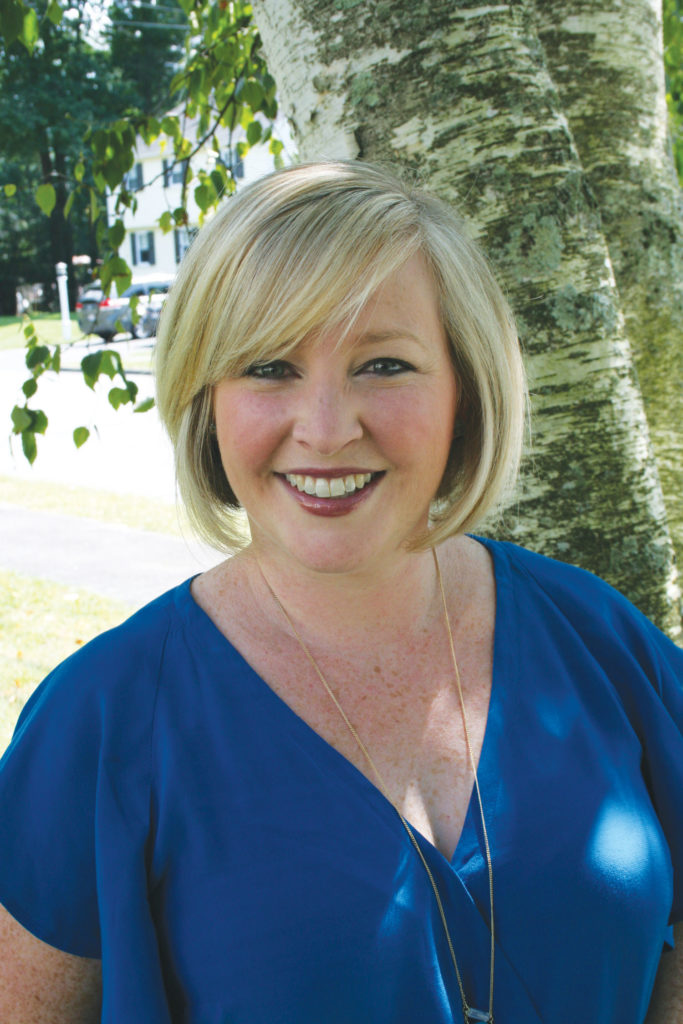 Jillian Hodge has always had passion to be a patient marketer, but that passion grew even stronger after she joined TESARO last year. Jillian saw the void for patient disease education within the ovarian cancer community and responded by partnering with Snow Companies to create a Disease Awareness Ambassador Program.
Jillian Hodge has always had passion to be a patient marketer, but that passion grew even stronger after she joined TESARO last year. Jillian saw the void for patient disease education within the ovarian cancer community and responded by partnering with Snow Companies to create a Disease Awareness Ambassador Program.
The goal of the program is to connect women living with ovarian cancer with someone else living with the disease. More specifically, to hear that patient share her story in tandem with a clinical nurse educator, in order to provide education about the disease and connect patients to local resources that support them through their journey. In addition to the live programs, TESARO’s ovarian cancer Ambassadors tell their stories on all available platforms: Video, blogs, within a Patient Leadership Council (PLC), and at internal trainings such as “Together with TESARO” (their patient assistance program) and HCP speaker trainings.
On top of that, TESARO’s PLC is a formalized forum in which the company gets valuable guidance and feedback from patients who are influencers in the ovarian cancer community. Through established procedures, patients regularly comment on and influence any patient-facing pieces the team develops. In fact, patient voices are welcomed at all levels of the company, including all the way up in the C-suite, where PLC feedback is regularly acted on.
Jillian’s efforts within the ovarian cancer community also started long before TESARO’s ZEJULA had been commercialized, which helped to build trust and appreciation within the community. And, as a result, Jillian and her advocacy counterparts within TESARO have positioned their company at the top of the pack within the ovarian cancer community.
Nik Gandhi, Director of Marketing, Specialty Products, Grifols USA, LLC
 Rabies and tetanus are two of the most lethal infectious diseases known to man. Rabies has a 100% fatality rate once symptoms appear, and is essentially 0% treatable. Tetanus kills 1 in 10 who are infected. Fortunately, both can be prevented through proper treatment protocols and compliance with CDC guidelines. These are messages that Nik Gandhi and his team at Grifols have been effectively spreading over the course of the past year.
Rabies and tetanus are two of the most lethal infectious diseases known to man. Rabies has a 100% fatality rate once symptoms appear, and is essentially 0% treatable. Tetanus kills 1 in 10 who are infected. Fortunately, both can be prevented through proper treatment protocols and compliance with CDC guidelines. These are messages that Nik Gandhi and his team at Grifols have been effectively spreading over the course of the past year.
Nik leads the marketing efforts for five hyper immune globulins and a tetanus vaccine. One of those products is a rabies immune globulin (RIG), which is used in conjunction with a rabies vaccine for patients who have been exposed to rabies. Another is a tetanus immune globulin (TIG) used in patients with an unknown or incomplete history of tetanus vaccinations, in conjunction with a tetanus vaccine for patients who have been exposed to tetanus. Nik and his team have developed campaigns directed to ER physicians, nurses, and even pharmacists for both products emphasizing the CDC guidelines for postexposure treatment of both rabies and tetanus. The reason: Vaccines can take a few weeks to become fully effective as the body is building antibodies to fight the virus. Meanwhile, a RIG or a TIG work to provide patients with immediate and necessary protection.
The other important message that Nik and his team emphasize in their campaign materials for both rabies and tetanus—don’t take a chance.
In 2015, market research showed that only 50% of the patients who were given a rabies vaccine also received a RIG. But in the last 12 months that number has increased to 80%. Data also shows that nearly all ER physicians are at least somewhat familiar with a TIG. Both are great accomplishments for Nik and his team.
Elizabeth Turcotte, Lead, Patient Hub, Bristol-Myers Squibb Company
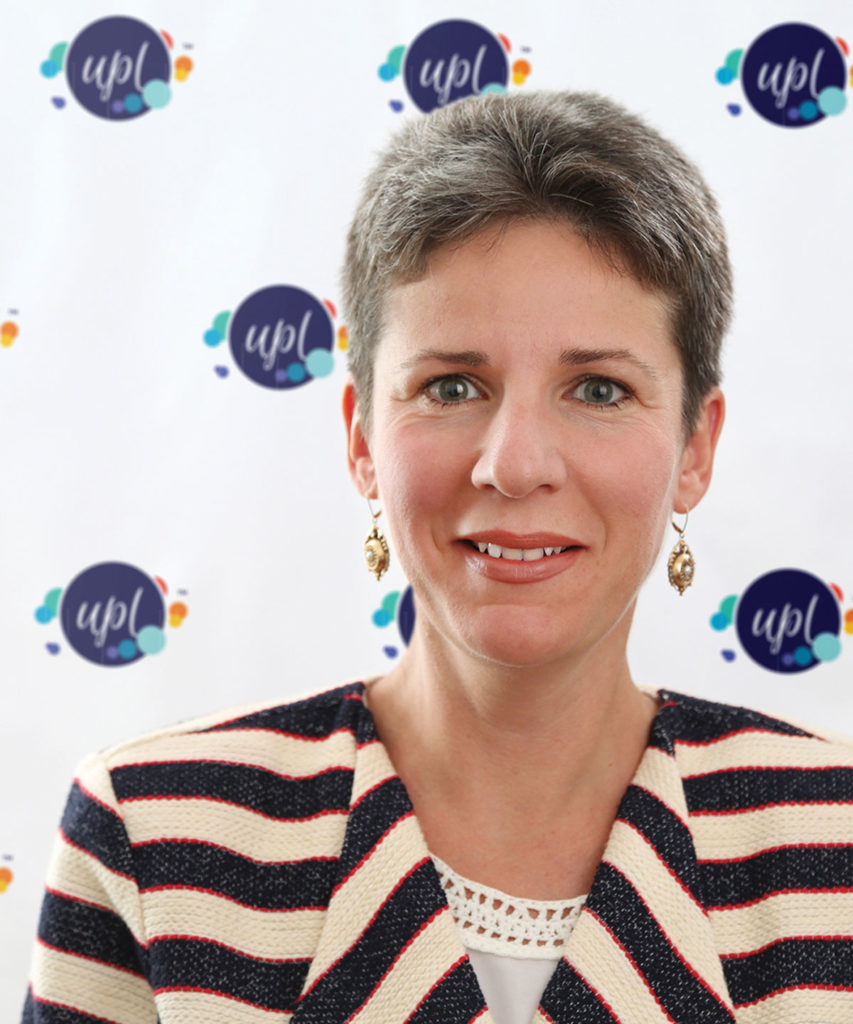 Elizabeth Turcotte is the driving force behind the Universal Patient Language (UPL). UPL is a Bristol-Myers Squibb capability for creating better patient-facing communications. It emerged from the realization that the pharmaceutical industry was changing to be more patient-centric. For Elizabeth, that meant taking a completely new approach to engaging with patients, focused on design-driven methods. In collaboration with Bridgeable, a Toronto-based service design firm, Elizabeth has extensively applied co-creation with end users, prototyping, and iteration based on user feedback, a systems thinking lens, and best practices in visual design. The end result is the UPL—a set of resources based on the generalizable learnings from dozens of interactions with patients, caregivers, clinicians, and communications experts.
Elizabeth Turcotte is the driving force behind the Universal Patient Language (UPL). UPL is a Bristol-Myers Squibb capability for creating better patient-facing communications. It emerged from the realization that the pharmaceutical industry was changing to be more patient-centric. For Elizabeth, that meant taking a completely new approach to engaging with patients, focused on design-driven methods. In collaboration with Bridgeable, a Toronto-based service design firm, Elizabeth has extensively applied co-creation with end users, prototyping, and iteration based on user feedback, a systems thinking lens, and best practices in visual design. The end result is the UPL—a set of resources based on the generalizable learnings from dozens of interactions with patients, caregivers, clinicians, and communications experts.
Since 2015, UPL has been applied to more than 20 internal design projects. The output of those projects has been incorporated into patient-facing materials from brochures to websites and call centers. UPL materials have proven to be effective for patients. According to a BMS patient survey, 92% said the UPL version of an MOA was easier to understand than the non-UPL version of the same MOA. Furthermore, after a brand site was updated with UPL materials the number of people who took a follow-on action on the site jumped from 9% to 38%.
Because of the success of UPL internally, BMS decided to publicly share the principles and tools on UPL.org. The site is tailored to help people apply the UPL in their own patient communications, whether they work at advocacy organizations, hospitals, or other pharmaceutical companies. The long-term aspiration is to see the UPL widely adopted by anyone who creates patient communications.
Andrea Cook-Julian, Director, Long Term Care, Sunovion Pharmaceuticals Inc.
 Approximately two years ago, Sunovion made the decision to enter the long-term care space. At the time, the organization had little to no brand recognition in the channel, no collaborative initiatives with customers, and very few resources dedicated directly to the channel. Flash forward a year and Sunovion is now viewed as one of the top partners in the space. In fact, the Maryland Senior Care Pharmacists Chapter of the American Society of Consultant Pharmacists (ASCP) named them as their Industry Partner of the Year. And the American Medical Directors Association (AMDA) and other national groups are welcoming the company to state chapter meetings to make unbranded presentations on quality measures, value-based purchasing, and more. Much of that success can be attributed to Andrea Cook-Julian.
Approximately two years ago, Sunovion made the decision to enter the long-term care space. At the time, the organization had little to no brand recognition in the channel, no collaborative initiatives with customers, and very few resources dedicated directly to the channel. Flash forward a year and Sunovion is now viewed as one of the top partners in the space. In fact, the Maryland Senior Care Pharmacists Chapter of the American Society of Consultant Pharmacists (ASCP) named them as their Industry Partner of the Year. And the American Medical Directors Association (AMDA) and other national groups are welcoming the company to state chapter meetings to make unbranded presentations on quality measures, value-based purchasing, and more. Much of that success can be attributed to Andrea Cook-Julian.
Andrea and her team consistently made their presence known at conferences and events in the long-term care space. And they did that by highlighting an unmet need in the care of respiratory patients in skilled nursing homes: Many patients come into the facility on rescue therapy alone, even though they have a moderate-to-severe disease that necessitates a longer-acting therapy. Since readmissions is such a hot topic at skilled nursing homes, they developed a resource that examined the type of treatment patients received and how that affected readmission rates.
As a result, they found a lot of associations, like the ASCP and AMDA, willing to partner with them on providing solutions to help facilities and residents in an evolving market. And these relationships translated into success for Bovina, a long-acting nebulized therapy for COPD. Not only did the brand see a significant change in the Long Term Care market compared to its competitor, but it also grew by about 20%.
Dan Duhart, Global VP Sales and Marketing, electroCore
 When Dan Duhart joined electroCore over a year ago, it was a true departure from his experiential background. electroCore, at the time, was a small, privately held company without a U.S. approved product. Dan’s background was rooted primarily in big pharma with robust marketing and commercialization budgets. But his experience proved crucial in the launch of gammaCore® (non-invasive vagus nerve stimulator).
When Dan Duhart joined electroCore over a year ago, it was a true departure from his experiential background. electroCore, at the time, was a small, privately held company without a U.S. approved product. Dan’s background was rooted primarily in big pharma with robust marketing and commercialization budgets. But his experience proved crucial in the launch of gammaCore® (non-invasive vagus nerve stimulator).
In addition to overcoming the obstacles faced by small medical device companies, Dan was challenged with launching a product that would disrupt the current treatment paradigm. A cluster headache is a rare and severe type of headache that typically affects one side of the head. For years, it has been treated primarily using oral therapies such as triptans, CCBs, or corticosteroids with limited success. The team at electroCore had the idea of stimulating the vagus nerve to provide relief from these horrific attacks. While vagus nerve stimulation was not a completely novel idea, the idea of FDA clearance for a handheld device that could stimulate the nerve non-invasively certainly was.
gammaCore was only recently FDA released in April 2017, so Dan’s plan is still in its infancy, but the innovation behind it can’t be denied. His team designed a calculated roll out aimed at getting this new technology in the hands of the nation’s top neurologists and headache specialists within days of approval. To ensure suffering patients could get immediate access to gammaCore, Dan’s plan also enabled qualified patients to get gammaCore at no cost for several months. With this patient-centric model, many patients will receive gammaCore without the added burden of additional cost—an altruistic feat very uncommon in today’s healthcare environment.
Brooke McCloy, Marketing Director, Pfizer Inc.
 VIAGRA’s “Woman” DTC campaign was already a big success, helping to motivate more men suffering from erectile dysfunction (ED) to reach out to a doctor. Brooke McCloy took the campaign to new heights by introducing VIAGRA’s new “Anthem” spot, which cleverly features memorable moments of VIAGRA’s various “Woman” spots with a diverse set of women in various relevant scenarios talking frankly about ED. This spot delivers VIAGRA’s Single Pack message in a fresh way to effectively engage the target male ED patient, leveraging situations where men might experience ED, whether it be on date night with their wives, on vacation together, or at home watching football.
VIAGRA’s “Woman” DTC campaign was already a big success, helping to motivate more men suffering from erectile dysfunction (ED) to reach out to a doctor. Brooke McCloy took the campaign to new heights by introducing VIAGRA’s new “Anthem” spot, which cleverly features memorable moments of VIAGRA’s various “Woman” spots with a diverse set of women in various relevant scenarios talking frankly about ED. This spot delivers VIAGRA’s Single Pack message in a fresh way to effectively engage the target male ED patient, leveraging situations where men might experience ED, whether it be on date night with their wives, on vacation together, or at home watching football.
Furthermore, Brooke led optimization efforts for VIAGRA website properties including Viagra.com, Viagraenespanol.com, and the ecommerce platform, VIAGRA home delivery. She deployed advanced digital techniques, including development of dynamic content, which is when you vary content displayed depending on where the viewer comes from. For example, when a user comes through the site from a specific vanity URL, their homepage message will relate to the topic of interest rather than a more general message. Overall, her work resulted in highly effective websites with increases in visitors (over six million annually), content consumption, and a reduction in bounce rates.
Brooke also found a way to deliver persuasive patient communications in digital video channels while aligning to consumer preference for short-form content. She created a series of impactful 15-second digital pre-roll videos highlighting VIAGRA Single Packs. This creative was able to capture the viewer’s attention in the critical first few seconds before the “skip ad” button appears.
Sanjay Malieckal, PharmD, Sr. Director Ophthalmic Marketing, Sun Ophthalmics
 “Oversaturated market with cheap generic alternatives” are not the words you want to hear when you are preparing to launch a new product. But these cautionary words didn’t daunt Sanjay Malieckal. With vast experience marketing ophthalmic products, Sanjay was the right person to shape BromSite’s™ commercial strategy and launch plan in a crowded ophthalmic NSAID market. Undertaking his first venture with a new entity, Sun Ophthalmics, Sanjay knew his organization had to enter the NSAID category with a bang, or risk relegation to “me too” status.
“Oversaturated market with cheap generic alternatives” are not the words you want to hear when you are preparing to launch a new product. But these cautionary words didn’t daunt Sanjay Malieckal. With vast experience marketing ophthalmic products, Sanjay was the right person to shape BromSite’s™ commercial strategy and launch plan in a crowded ophthalmic NSAID market. Undertaking his first venture with a new entity, Sun Ophthalmics, Sanjay knew his organization had to enter the NSAID category with a bang, or risk relegation to “me too” status.
Partnering with the creative agency Dudnyk, Sanjay went to work developing a compelling strategy that would shake up the eye care market and get eye care professionals excited about a new treatment. Sanjay led the launch team in initiating brand-building workshops, conducting extensive market research, and determining the most appropriate and impactful positioning for Sun’s inaugural product. In this case, they focused on several key differentiators; BromSite is the only ocular NSAID with an indication for the prevention of ocular pain, and it is formulated with the DuraSite™ delivery system to enhance delivery of medication to the ocular surface and increase ocular retention, allowing more medication where it’s needed on the eye.
Sanjay’s leadership culminated in a powerful launch campaign—the BromSite Knight—that highlighted the advantages his product would offer on the NSAID battlefield. Following the October 2016 launch, BromSite sales have exceeded expectations, with consistent, strong weekly prescription numbers. Within four months of launch, BromSite had achieved a 10% branded market share, with nearly 1,500 total writers. Today, the compelling Knight campaign continues to generate excitement and interest among eye care professionals, establishing Sun as a major player and Sanjay as a rising executive talent worth recognizing.
Harshal Deshpande, Director of Marketing, Promius Pharma
 Being a trailblazer is never easy. But Harshal Deshpande, and the rest of the Promius Neurology team, wanted to usher in unprecedented innovation and outreach at Promius Pharma. Under Harshal’s vision, the team worked to create a cohesive ecosystem for patient engagement and empowerment. Promius partnered with Greater than One (GTO) in this effort.
Being a trailblazer is never easy. But Harshal Deshpande, and the rest of the Promius Neurology team, wanted to usher in unprecedented innovation and outreach at Promius Pharma. Under Harshal’s vision, the team worked to create a cohesive ecosystem for patient engagement and empowerment. Promius partnered with Greater than One (GTO) in this effort.
In this campaign, Harshal and his team brought in easy and effective communication tools for patients to better understand and relay their disease condition to their HCPs. Through this campaign, Promius launched tools to provide a way for patients to understand these symptoms better and in turn, be well equipped to seek the right treatments to address their migraine attacks. Migraine attacks were visually represented as four unique monsters, providing patients and HCPs visual aids for jump-starting conversations. Additionally, migraine sufferers were championed as active participants in managing their condition—a stark contrast to other campaigns in the space that showed patients at the mercy of their attacks.
The campaign introduced several previously untested tactics at Promius, such as securing a social influencer to share her authentic migraine story via her blog. The campaign also launched Promius’s first unbranded social effort, with more than 20 million digital impressions via Facebook, Twitter, and YouTube in less than 10 months. They also partnered with Miles for Migraine, a national nonprofit patient advocacy group, to facilitate face-to-face conversations with patients, caregivers, and HCPs about the challenges and opportunities facing the migraine community. Overall, during the campaign’s peak, conversions of web visitors from the unbranded website to the branded website topped 20%—greatly exceeding industry benchmarks.
Al Masucci, Vice President, IPF/ILD, Boehringer Ingelheim
 Idiopathic pulmonary fibrosis (IPF) is a rare pulmonary disease that scars the lungs until they can no longer work properly. IPF is particularly insidious because it is identified only after ruling out other pulmonary diseases and is often confused with more common illnesses such as chronic obstructive pulmonary disease (COPD) or asthma. Ultimately, most patients die within five years post diagnosis.
Idiopathic pulmonary fibrosis (IPF) is a rare pulmonary disease that scars the lungs until they can no longer work properly. IPF is particularly insidious because it is identified only after ruling out other pulmonary diseases and is often confused with more common illnesses such as chronic obstructive pulmonary disease (COPD) or asthma. Ultimately, most patients die within five years post diagnosis.
Al Masucci’s accomplishments in connection with this rare disease and the breakthrough treatment OFEV addressed the needs of pulmonologists and undiagnosed patients. To help undiagnosed patients and pulmonologists identify IPF sooner—and bring hope in a category with few options—Al and his team deployed several innovative and targeted initiatives. That includes BreathlessIPF.com, a website providing information to help patients and caregivers determine if they should suspect IPF. But the truly unique aspect: Partnership with New York Yankees legend Bernie Williams, whose father passed away from IPF. The Bernie Williams media tour promoting the “Breathless” campaign reached over 118 million people nationwide—and another 1.6 million impressions through the social media campaign.
The team also launched the “IPF by the Numbers” TV spot—the only commercial that drives awareness of IPF. But they didn’t stop there. For Rare Disease Day, they created kits focused on the importance of support groups and support systems in IPF management. Then for Pulmonary Fibrosis Awareness Month, BI created a caregiver recognition kit. In both cases, the company distributed more than 1,000 kits nationwide.
“My team has done a tremendous amount of work to raise IPF awareness,” Al says. “The innovative programs we’ve done wouldn’t be possible without each and every one of them. Their passion for helping IPF patients and their caregivers is remarkable!”
Jason Marshall, Sr. Associate Director, Marketing, Boehringer Ingelheim
 Jason Marshall provided COPD patients with a reality check that shook a complacent audience to take action toward better treatment.
Jason Marshall provided COPD patients with a reality check that shook a complacent audience to take action toward better treatment.
Currently, 15 million people in the U.S. have been diagnosed with chronic obstructive pulmonary disease or COPD, and 12 million more may have it. Because COPD is a chronic, progressive disease, it doesn’t go away and can get worse over time. For many people, that means turning to their rescue inhalers more often than they would like. With this, “COPD Reality Check” was born. Jason spearheaded a campaign that was built to shake people from their slumber and remind them that reaching for a rescue inhaler again and again may not be the best long-term strategy.
The campaign immediately began performing well from several initial engagement metrics. And in the end, it generated much needed consumer awareness, was embraced by a prominent advocacy group within the category, and drove direct script lift.
But that is only one example of what makes Jason such a deserving Brand Champion. Following a recent product launch, the marketing team wanted to maximize the Point of Care opportunity as much as possible to activate patients. Jason lead them in the development of a 75-second POC video, which introduced the brand as an exciting, innovative, and effective new treatment option for physicians and patients.
The video debuted in February 2016, and within a few months, was running in nearly 2,000 HCP offices across the country, delivering strong results while receiving a warm reception from both patients and physicians.
Ajaya Das, Senior Director, Head of Marketing, Women’s Health, TEVA Pharmaceuticals
 Ajaya Das championed several firsts at TEVA by adapting a more Millennial approach through high-impact marketing innovations in the areas of social media, PR, media partnership, and on-demand distribution for Plan B One-Step, Emergency Contraception (EC), and PARAGARD, the only 100% hormone-free IUD.
Ajaya Das championed several firsts at TEVA by adapting a more Millennial approach through high-impact marketing innovations in the areas of social media, PR, media partnership, and on-demand distribution for Plan B One-Step, Emergency Contraception (EC), and PARAGARD, the only 100% hormone-free IUD.
For instance, the “Perfectly Imperfect” Emergency Contraception Knowledge multichannel campaign focused on educating Millennials about EC facts versus fiction. Thanks to Ajaya’s efforts, 10 college campus events were orchestrated in conjunction with celebrity spokespeople (Carly and Nessa from MTV’s Girl Code) and a nationally recognized women’s health expert, all while Plan B One-Step established one of pharma’s first branded social media channels on Instagram. The campaign ultimately delivered 176MM targeted paid media impressions to women 18-34 from July 2015 through June 2016.
Ajaya also oversaw the launch of the “Myth Breaker” multichannel campaign, which encourages women (mostly 18-34 years old) to take control of each “oops moment” with Plan B One-Step. The campaign uses a hyperbolic tone to communicate with Millennials through sponsored social pushes on channels such as Instagram, Snapchat, and Facebook. Since June 2017, this campaign has delivered 142MM targeted paid media impressions, and the branded video has already been viewed online 18 million times.
Ajaya’s latest exciting endeavor is the #NoHormonesPLZ multichannel unbranded campaign designed to raise awareness of non-hormonal birth control options. Partnering with actress and activist Sophia Bush, this initiative also includes a sweepstakes with the chance to win a meeting with Bush or get a $1,000 gift card. So far, the site has received 480,000 visits, and 79,000 sweepstakes entries.
Overall, Ajaya’s marketing leadership and efforts have driven significant growth for the brands but most importantly, helped millions of women to move onward with their lives.



